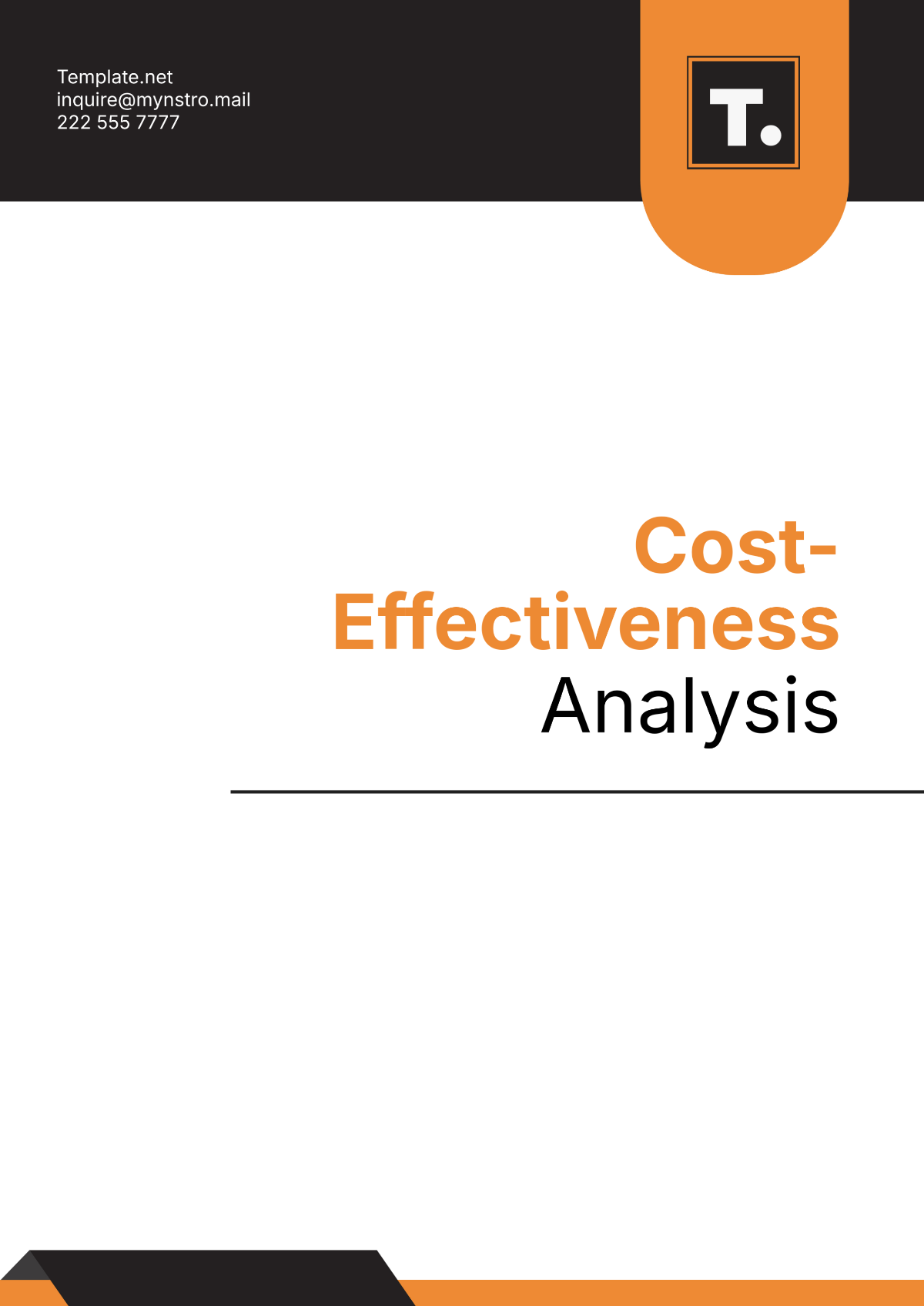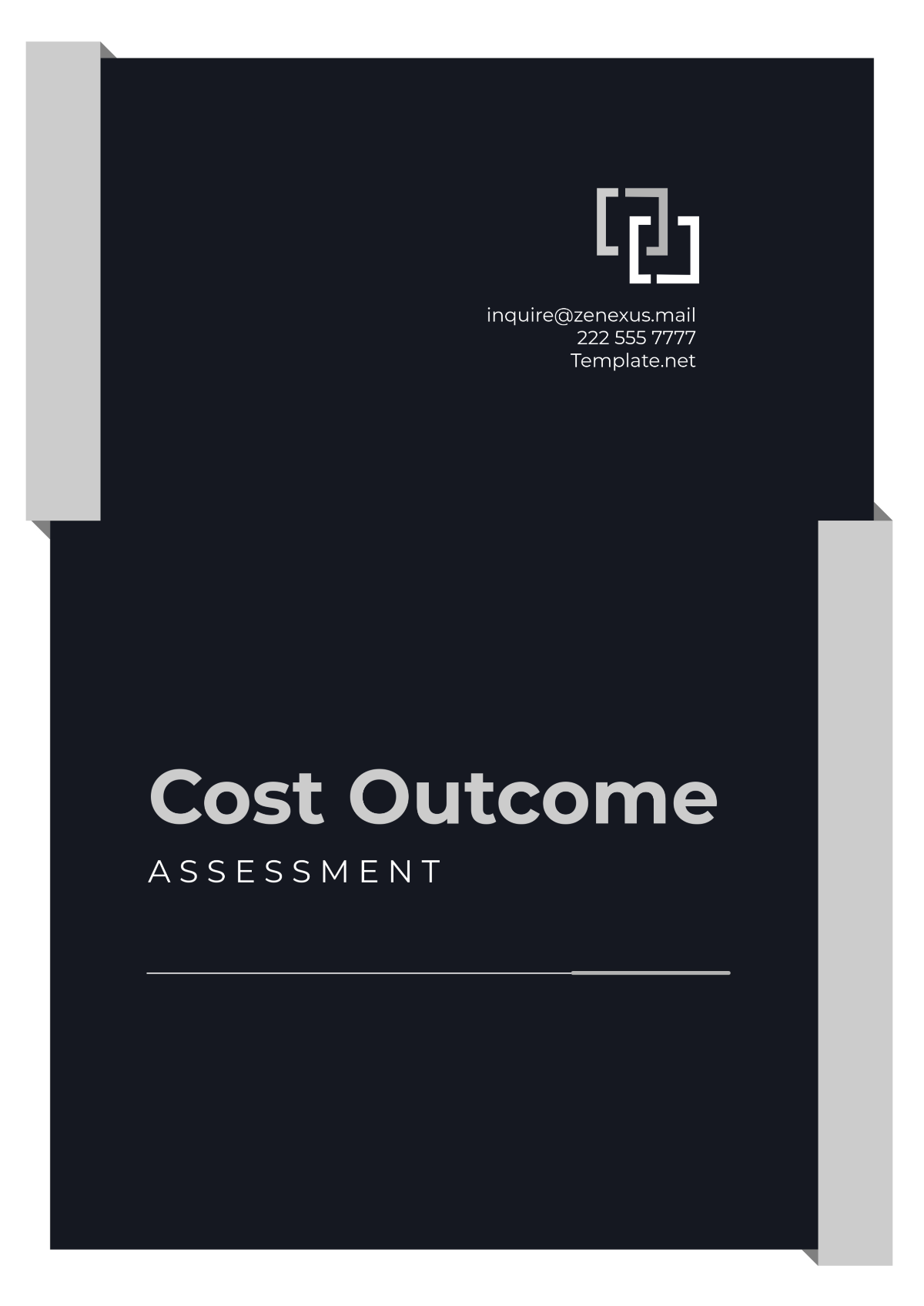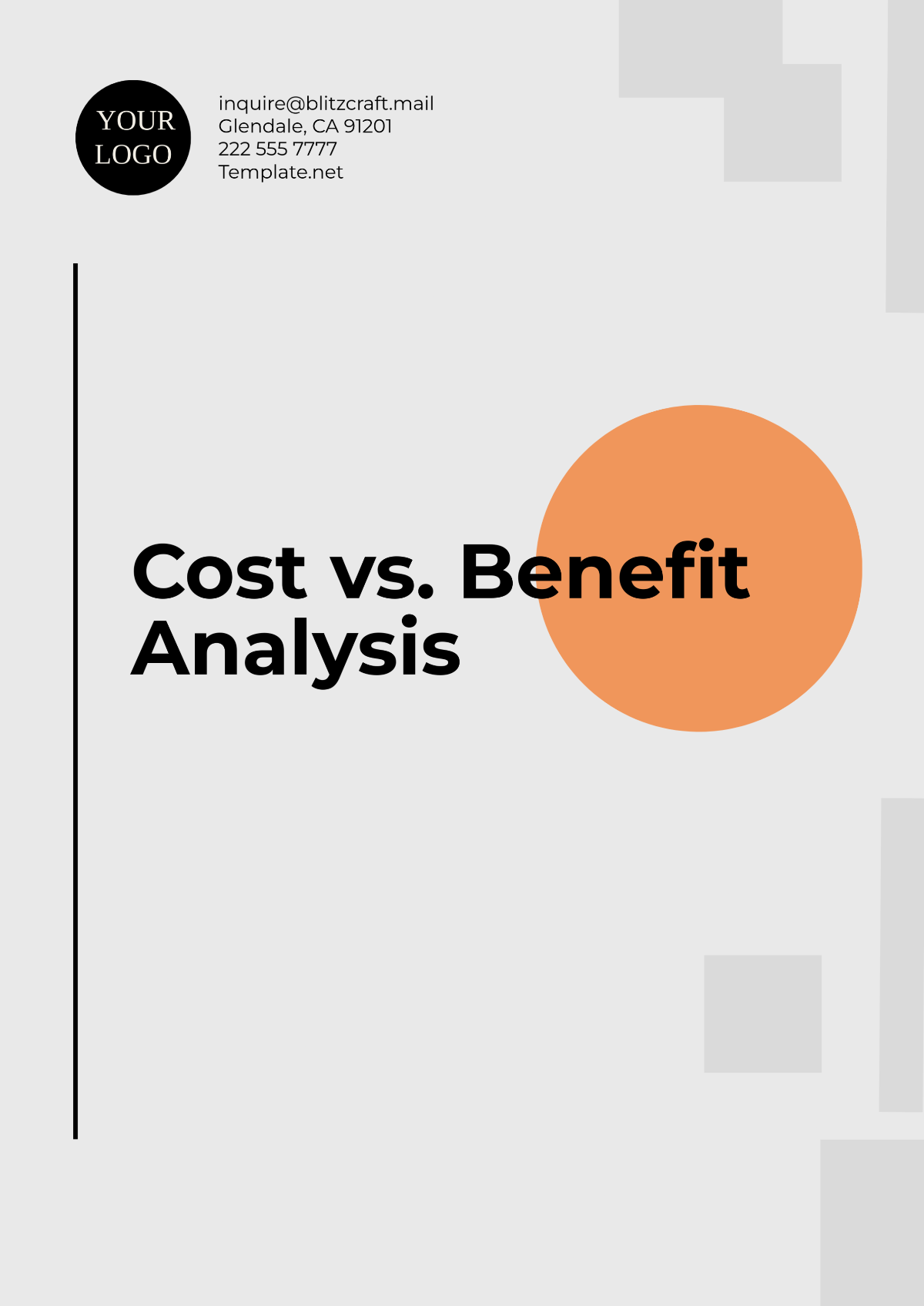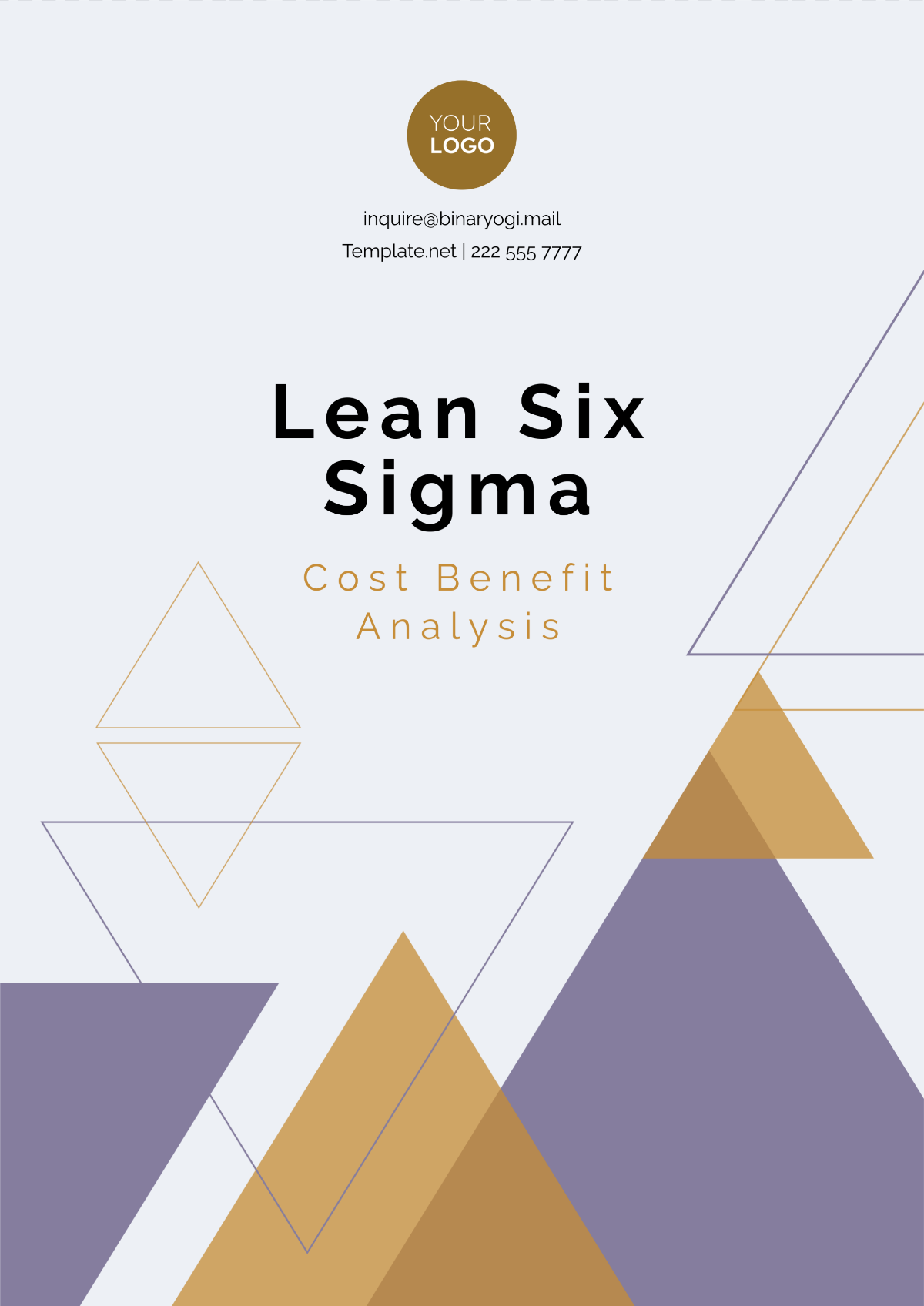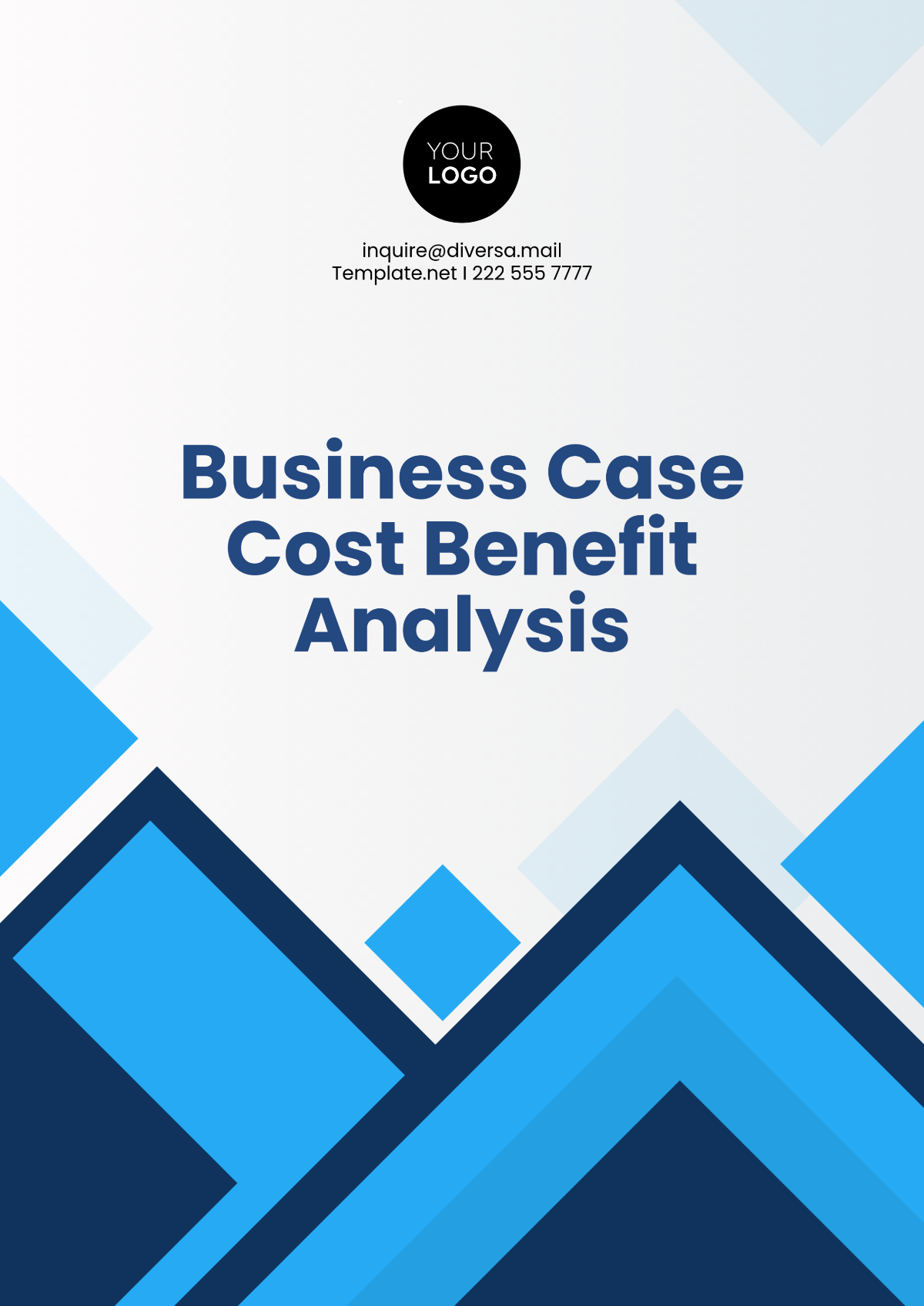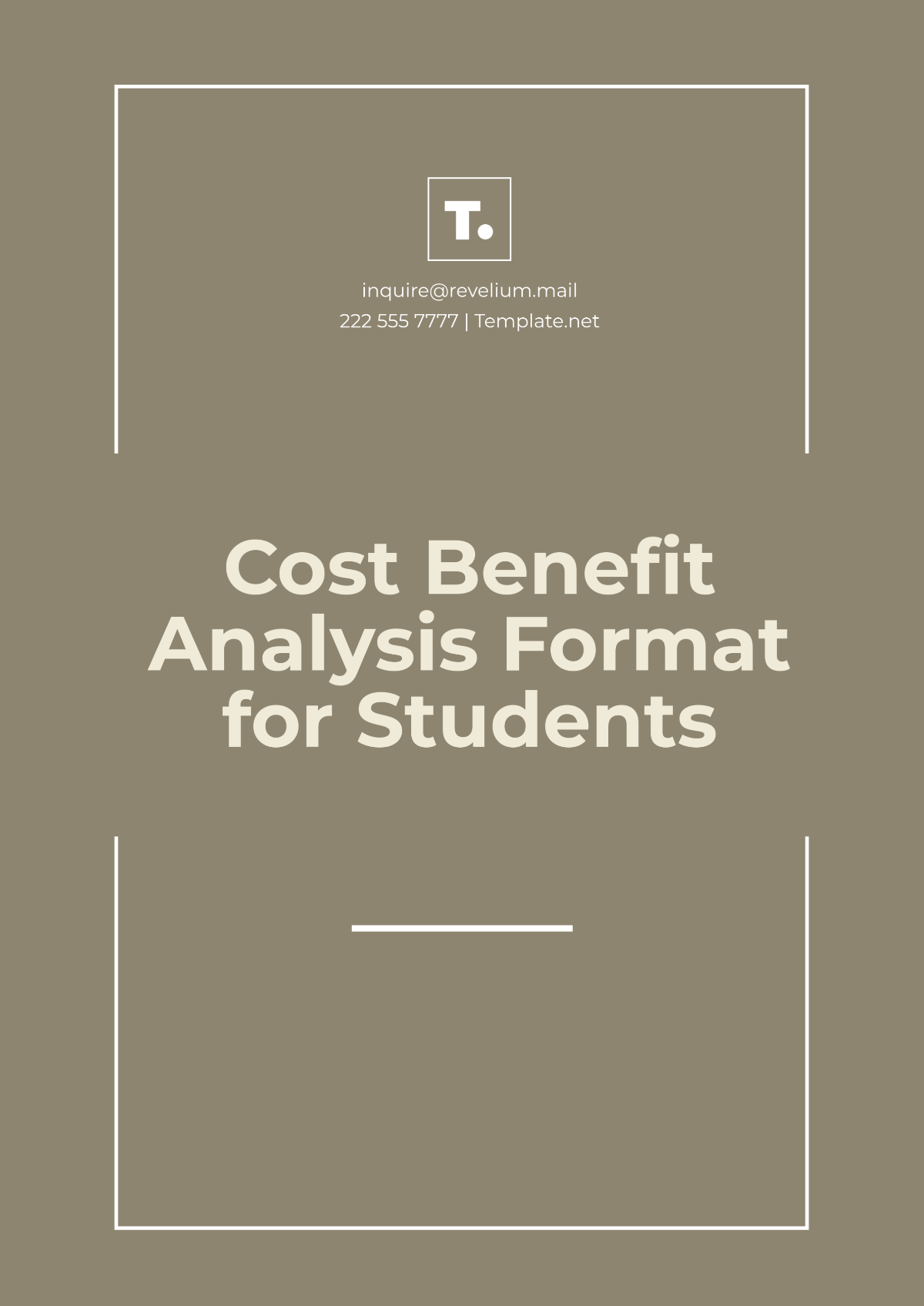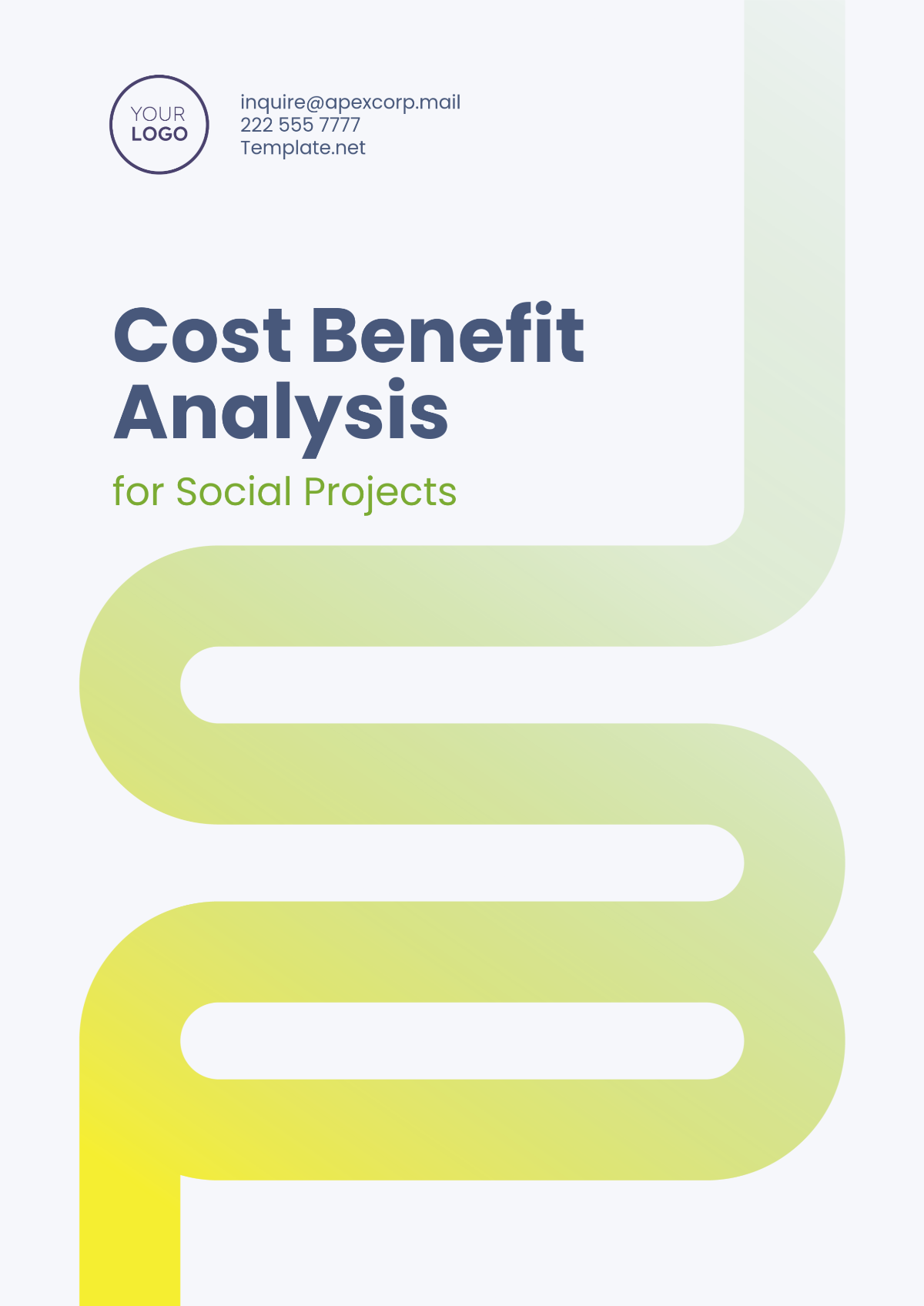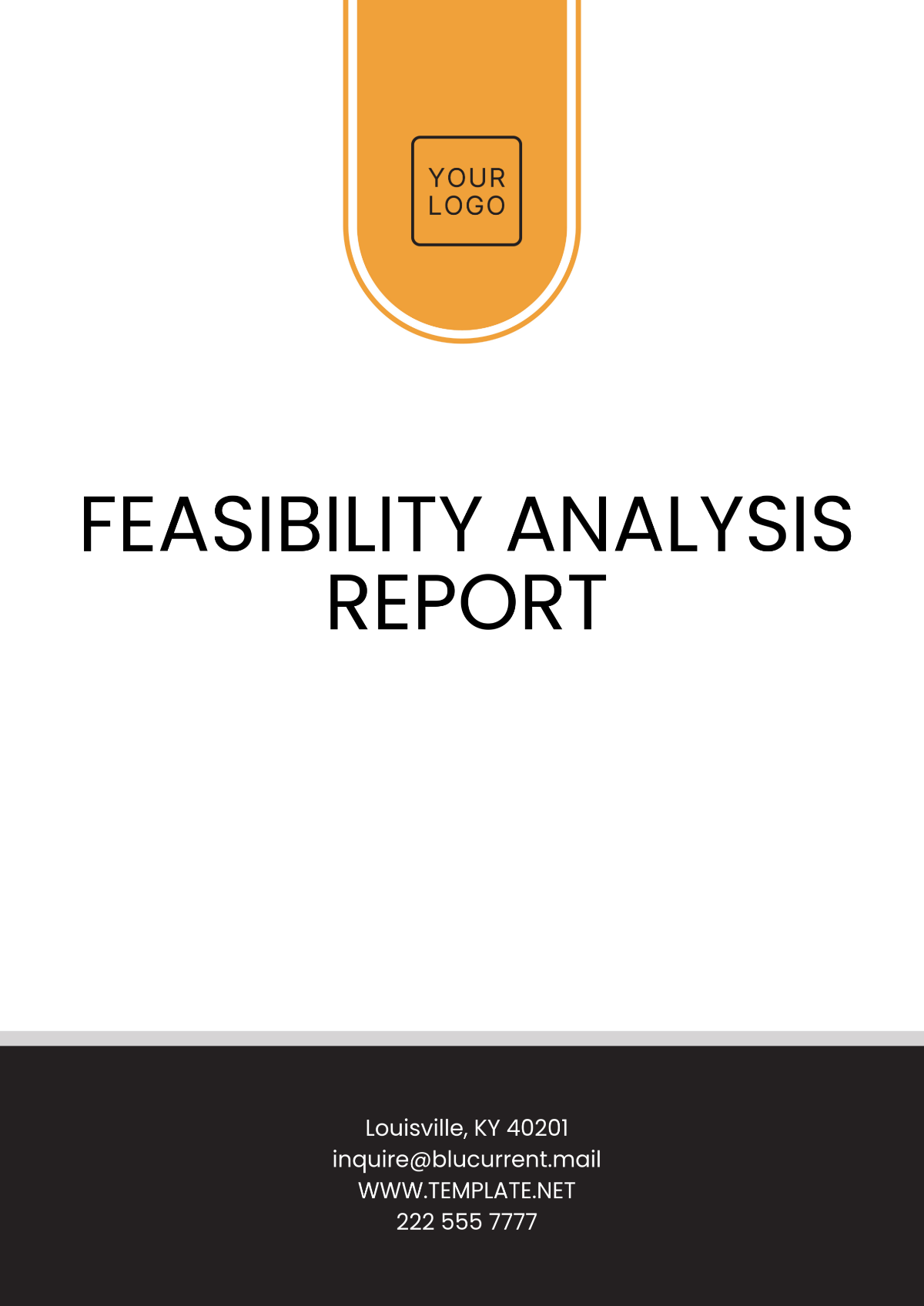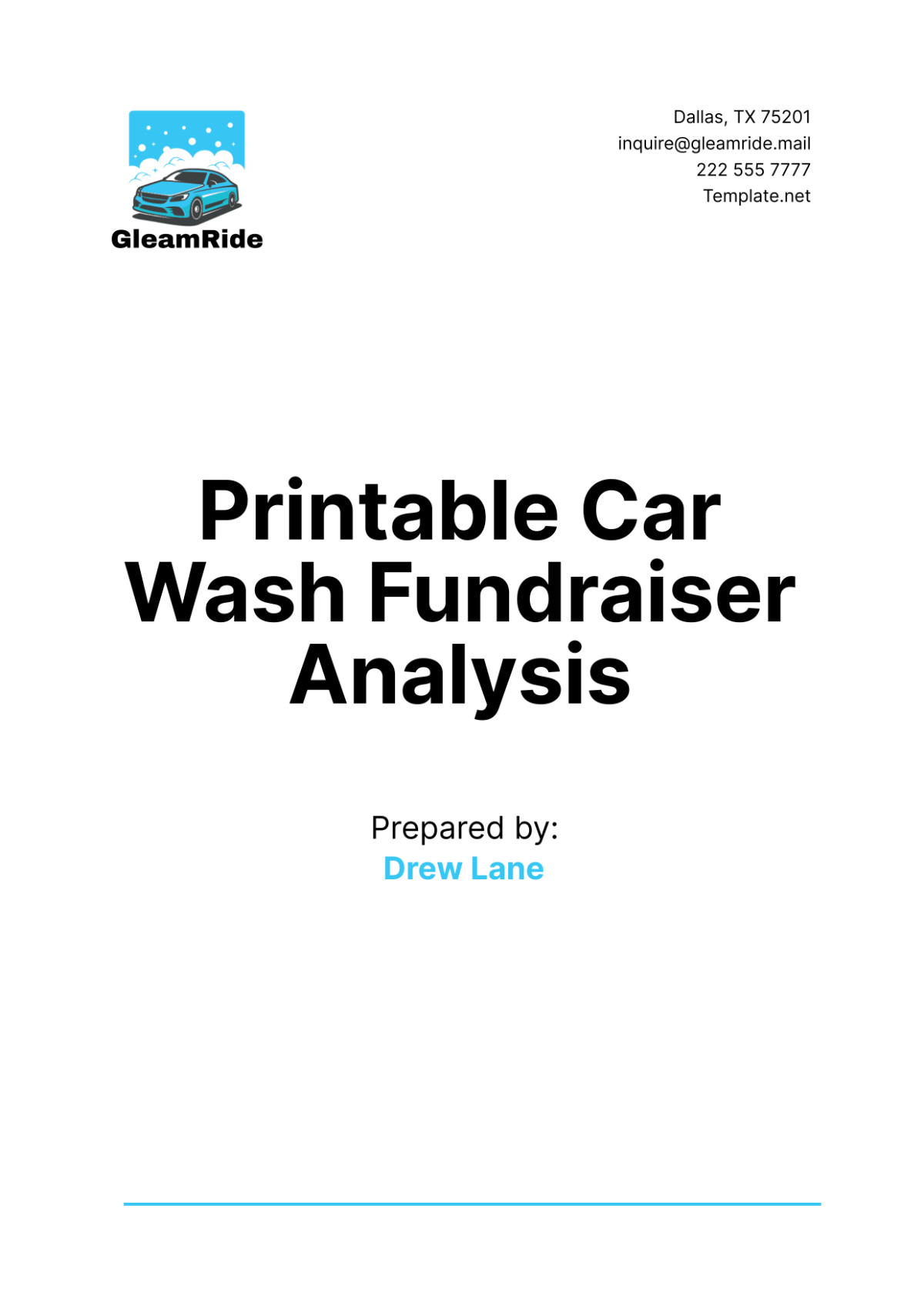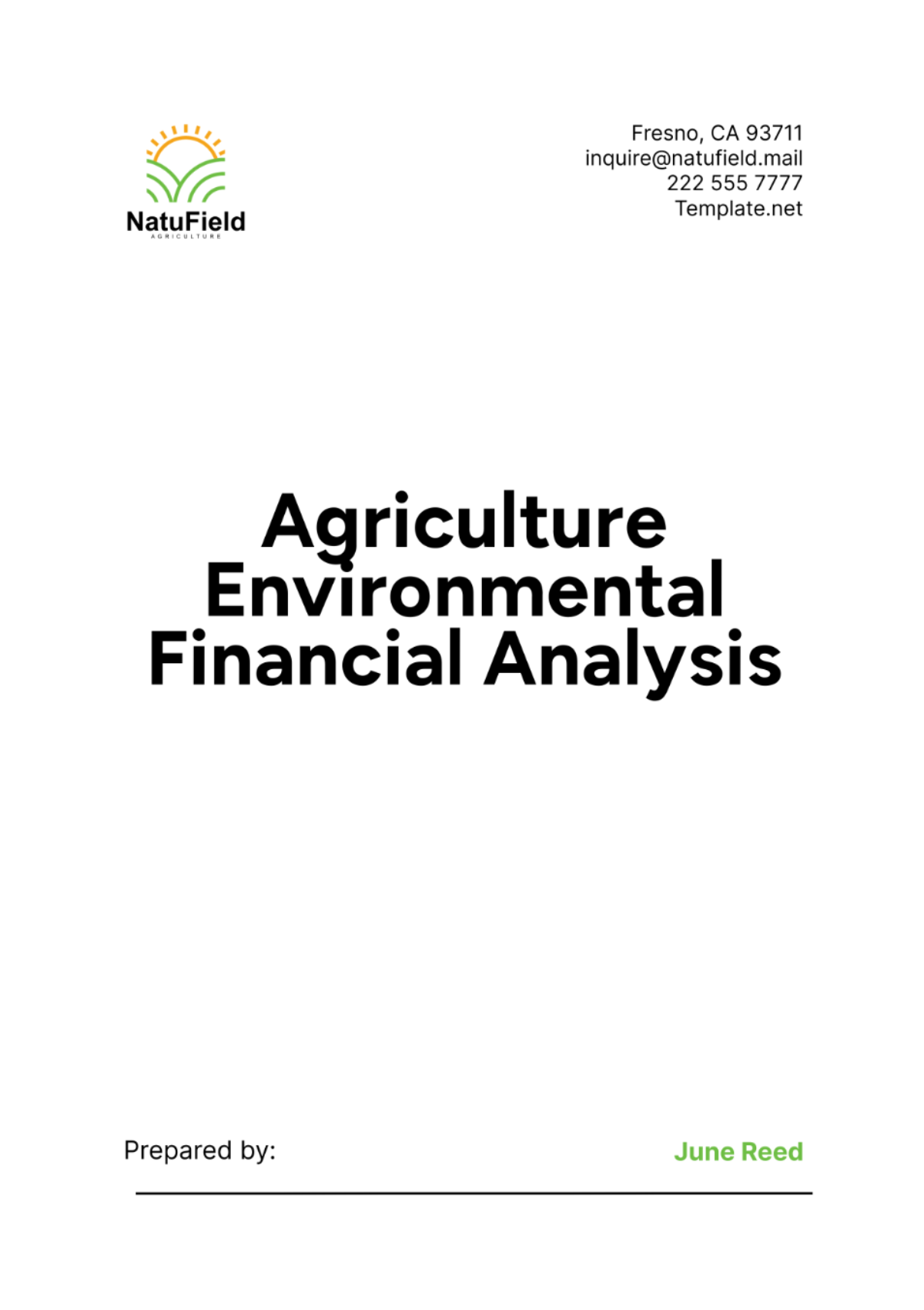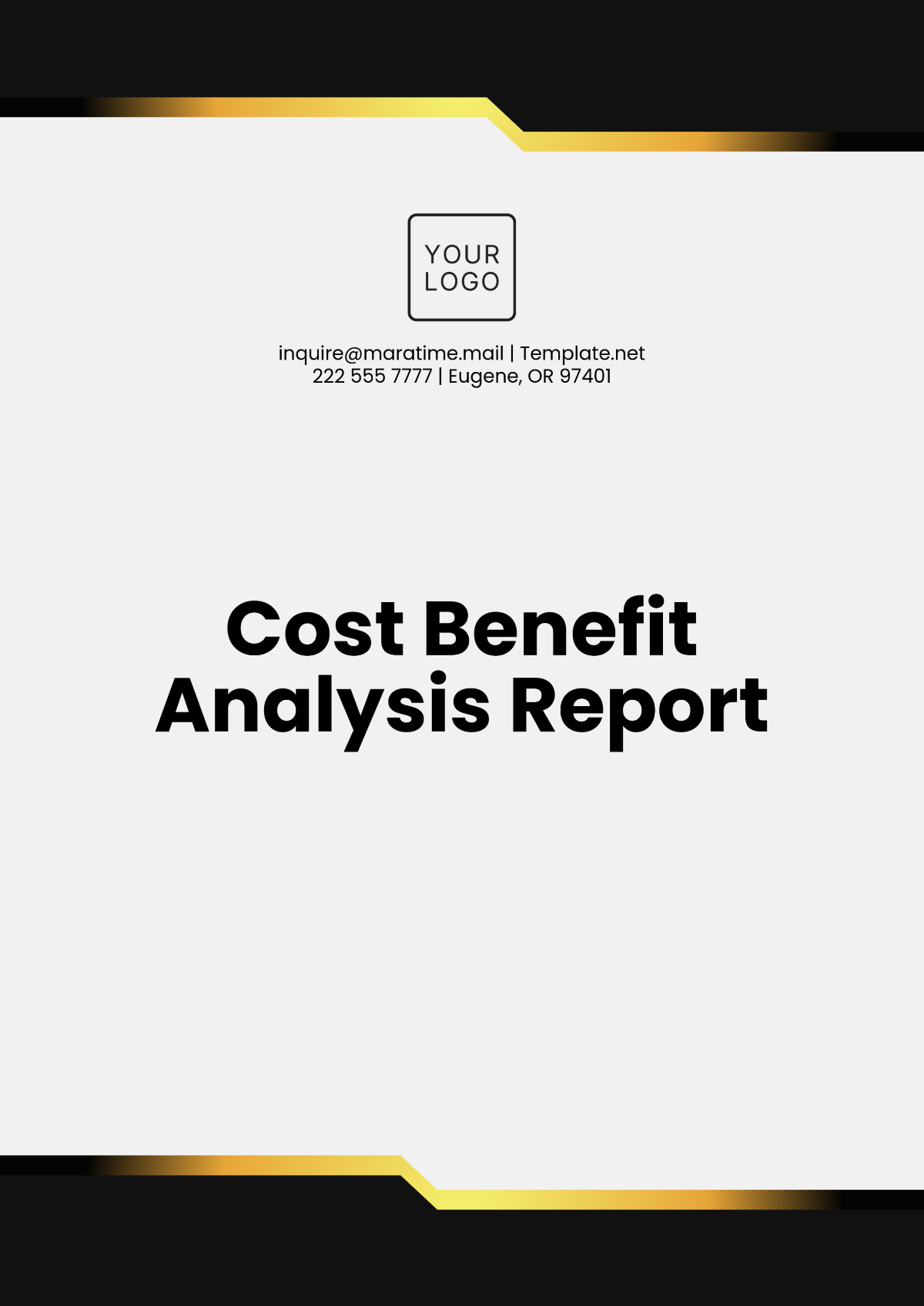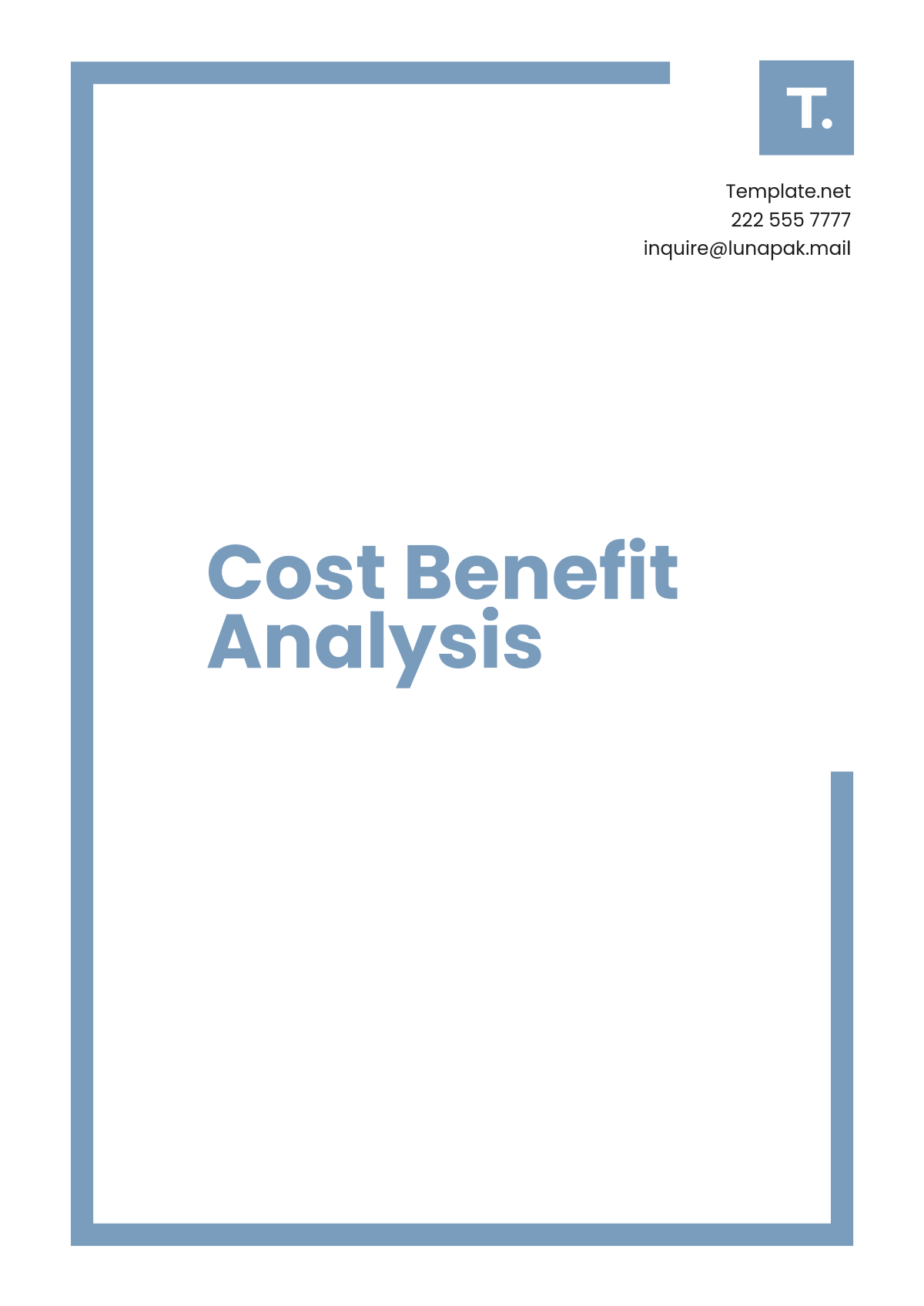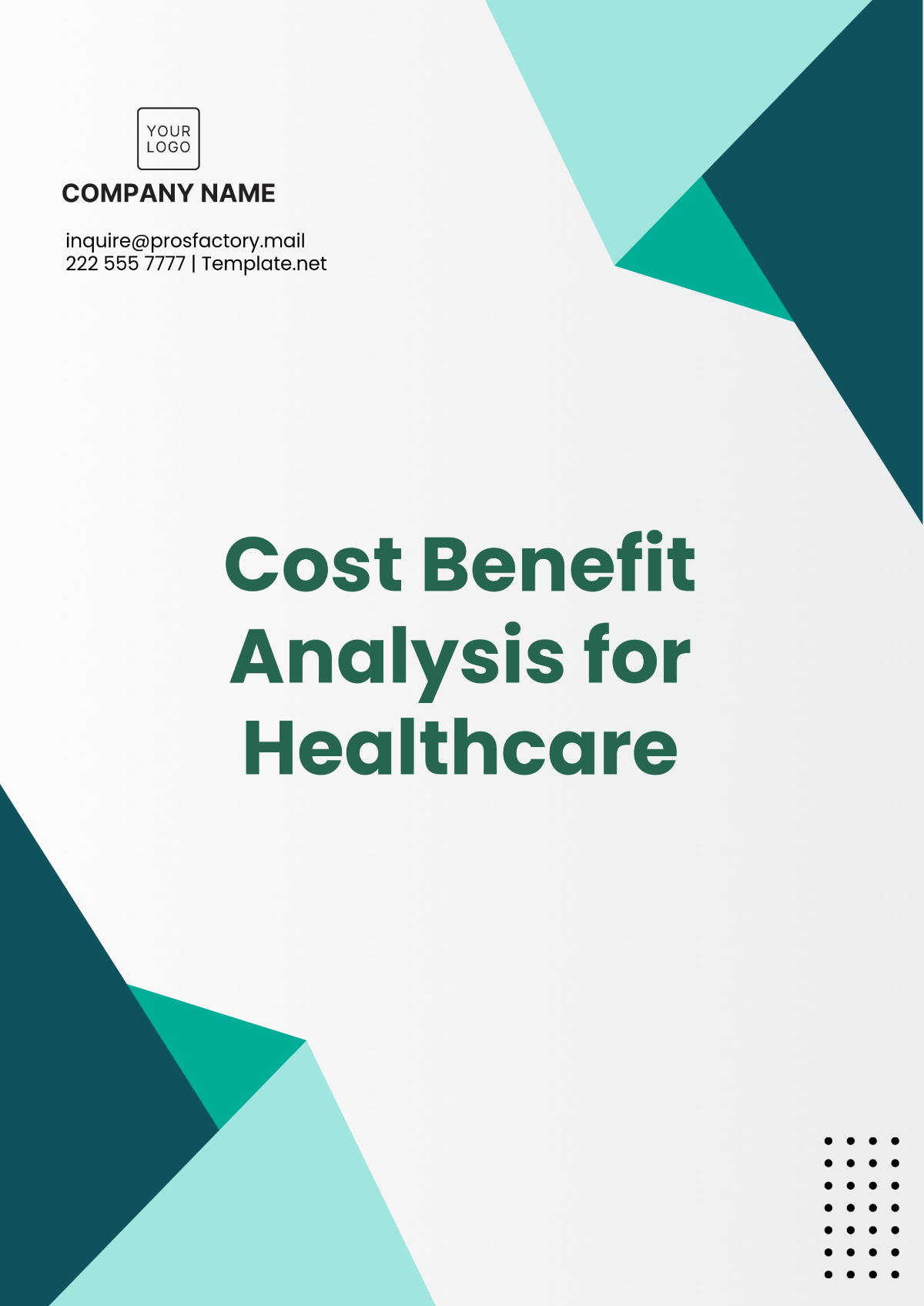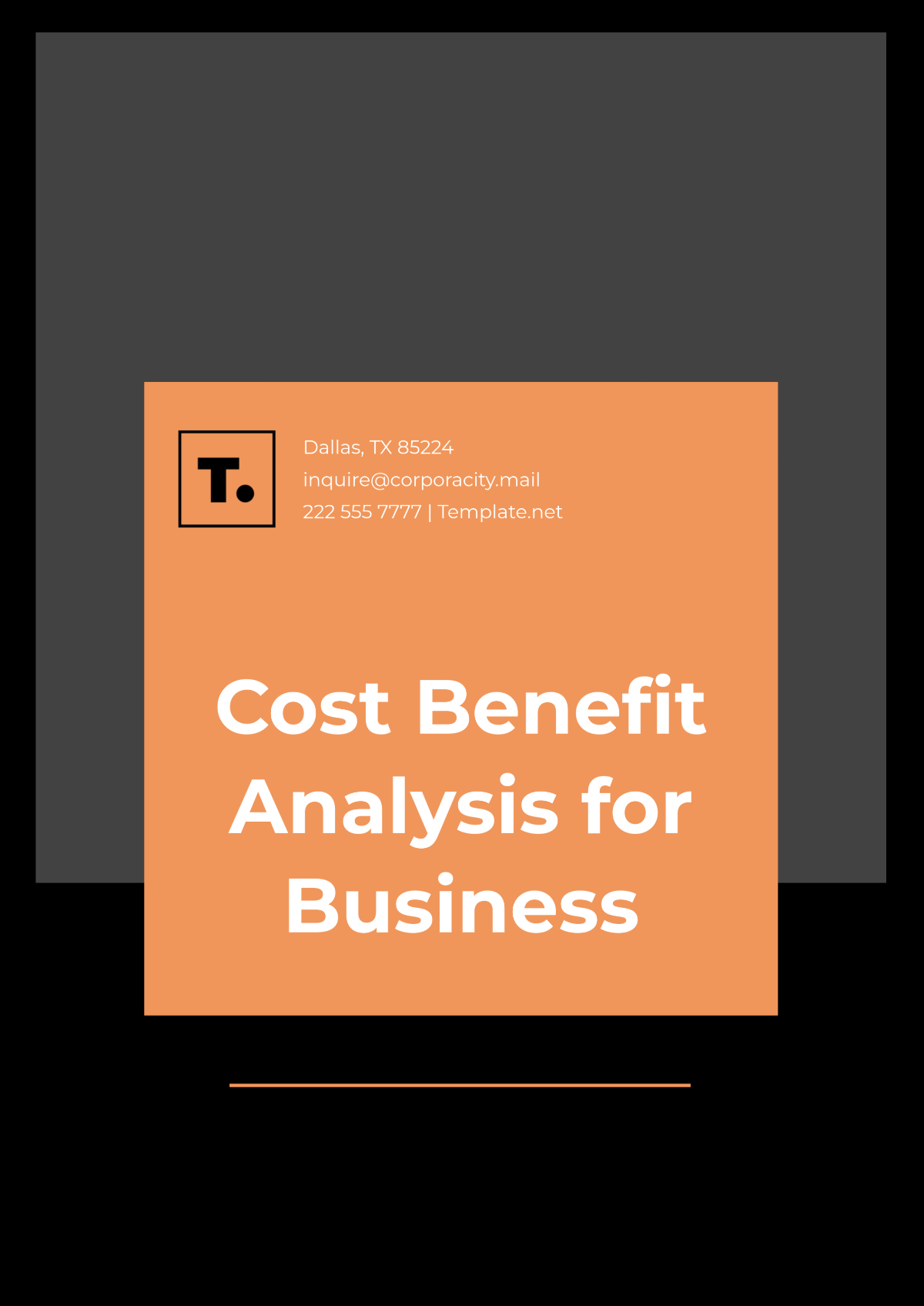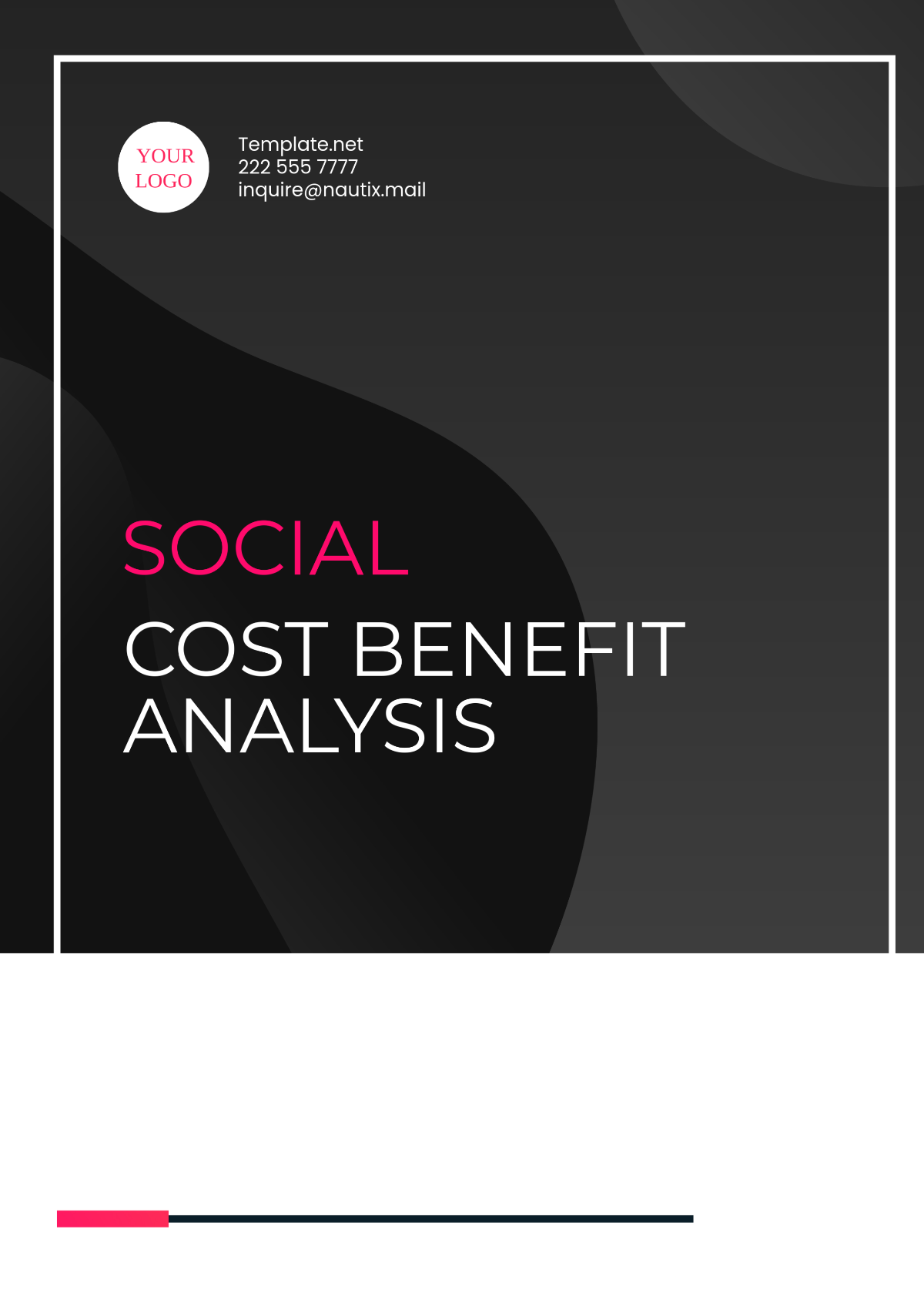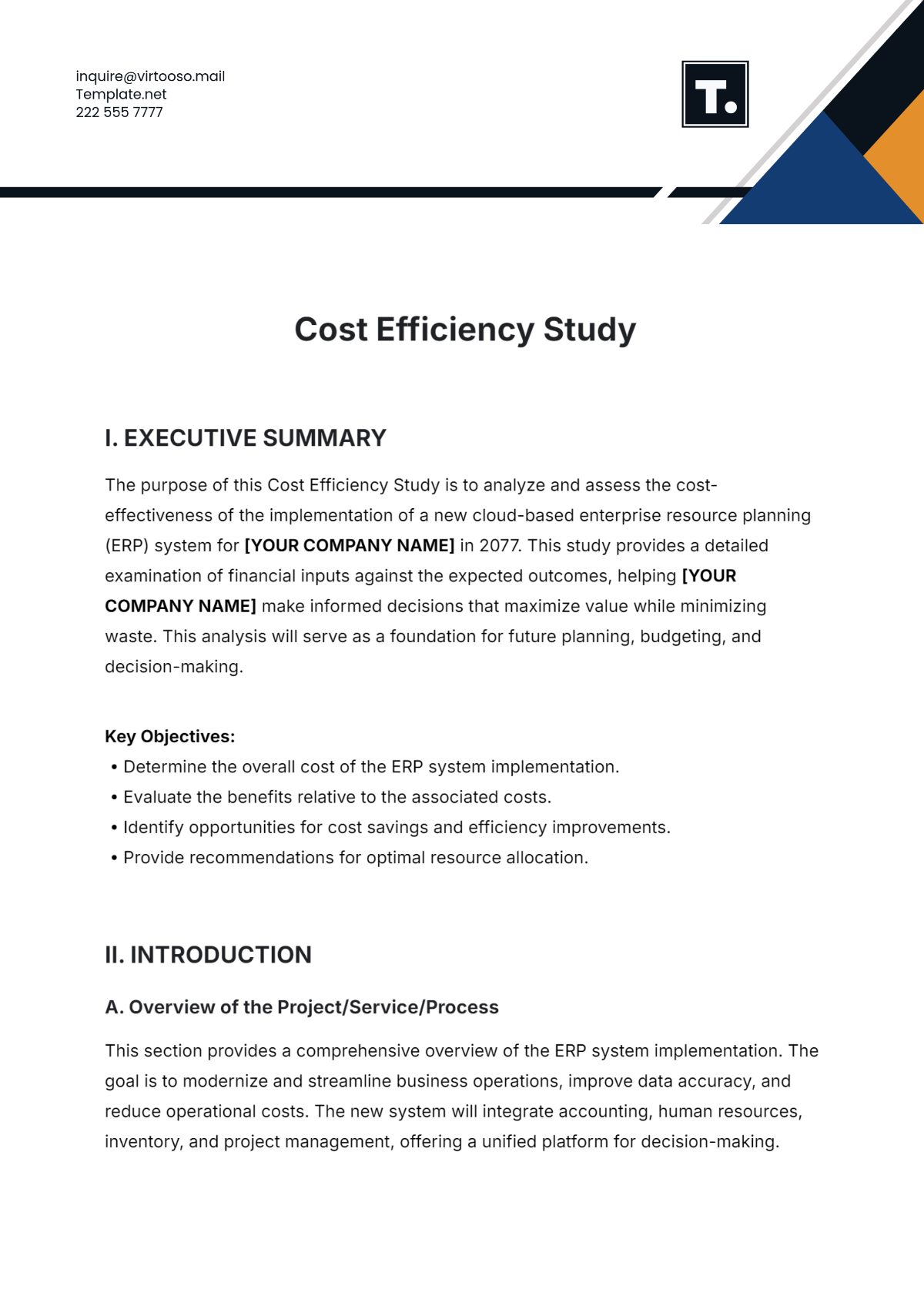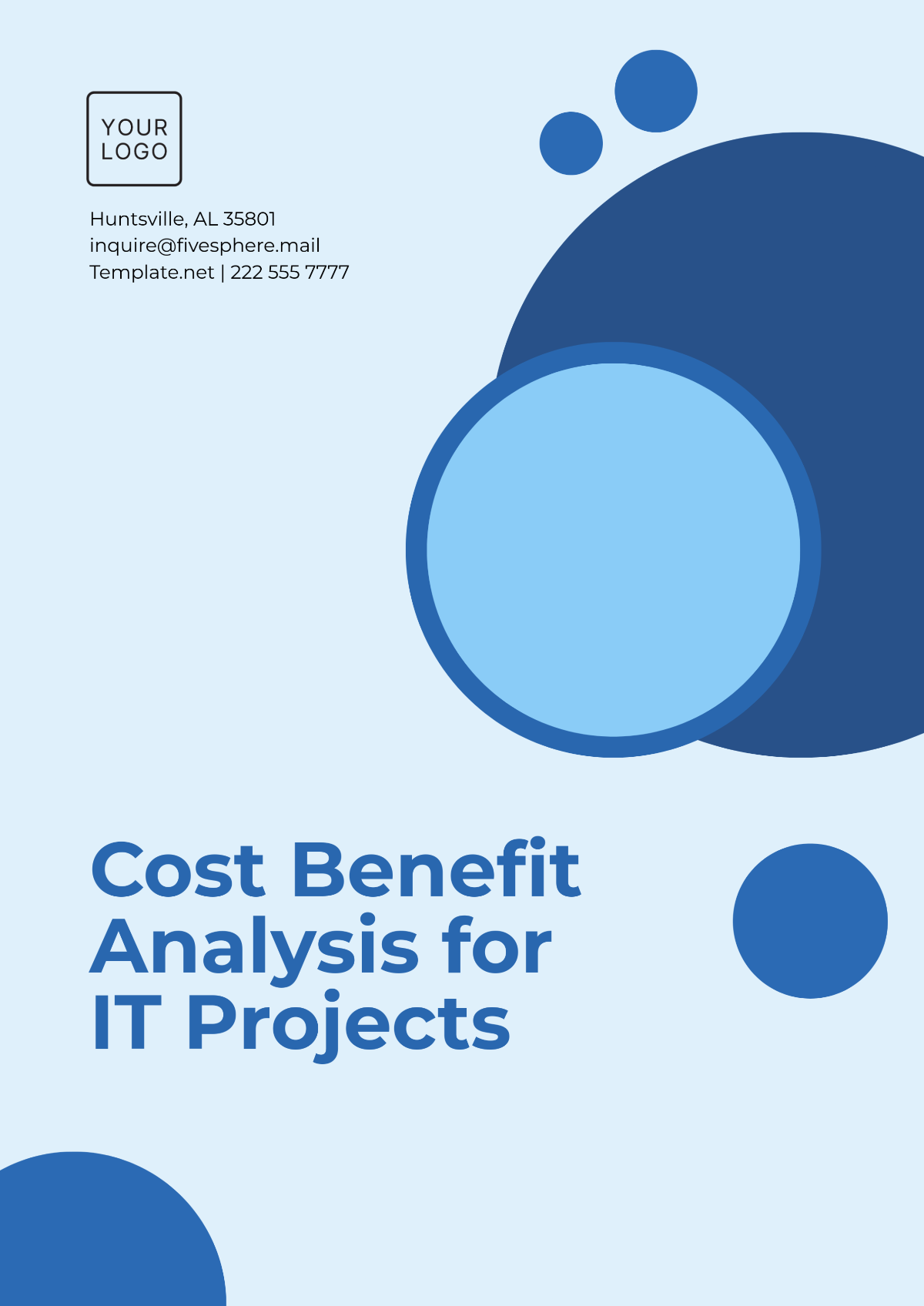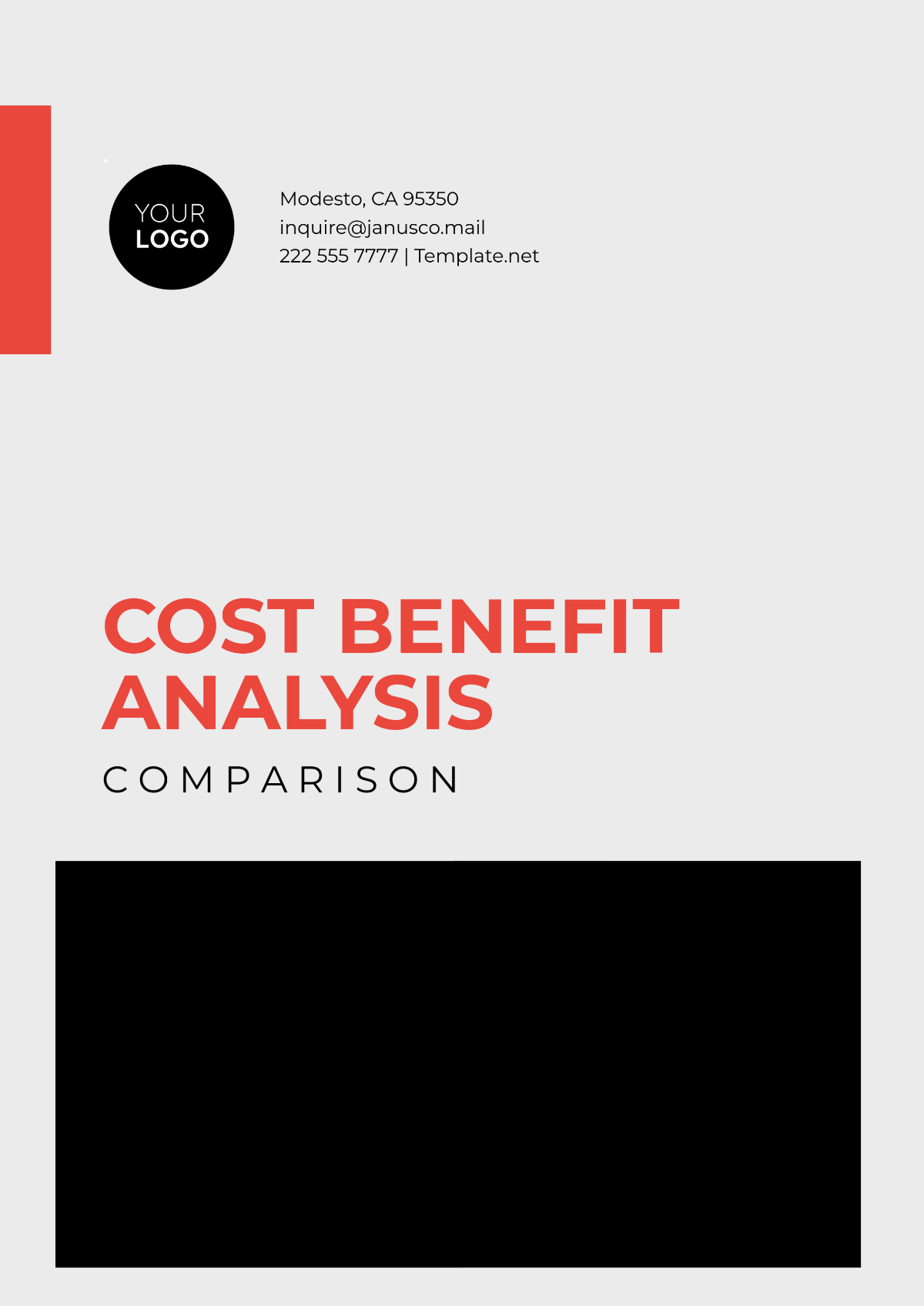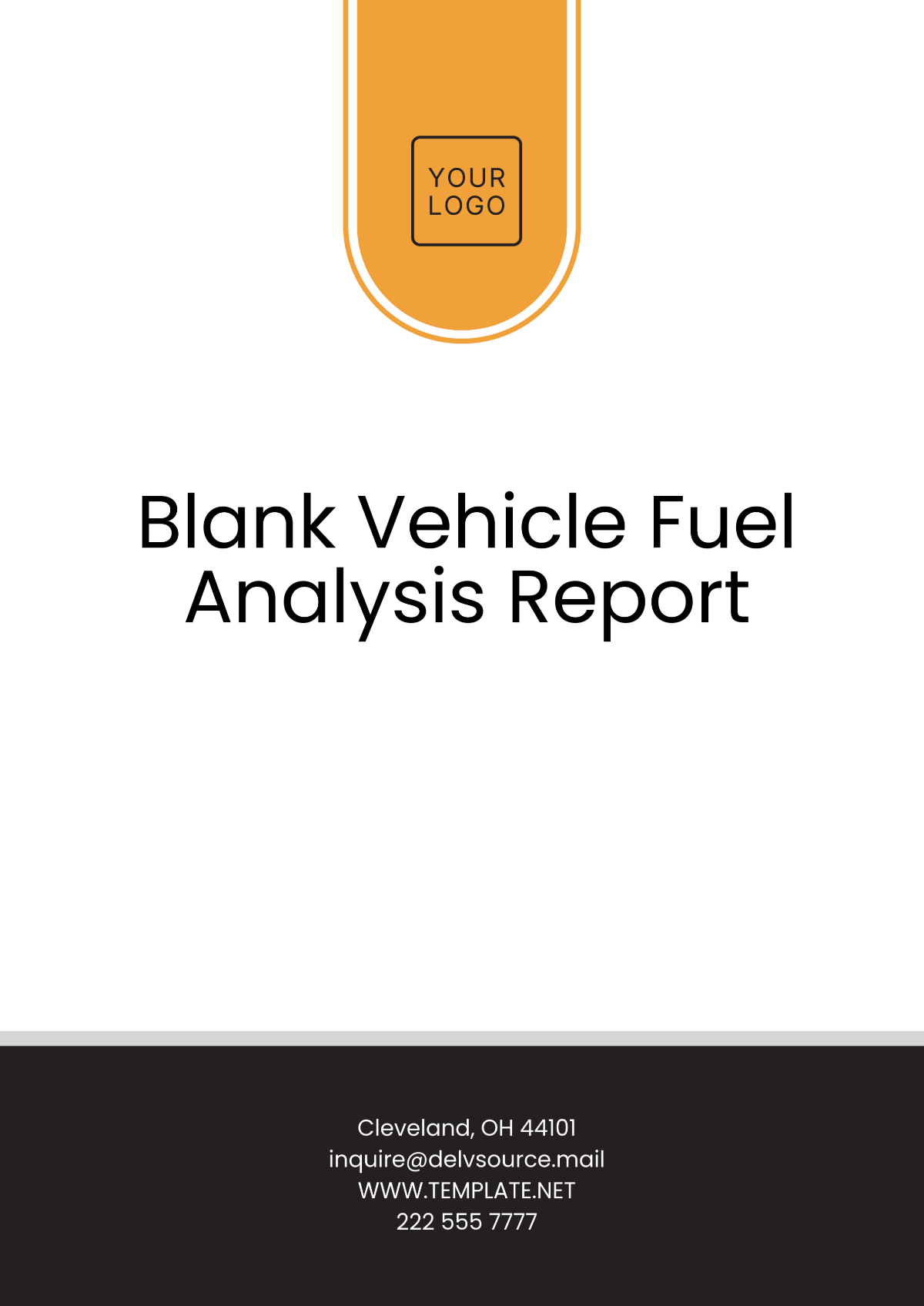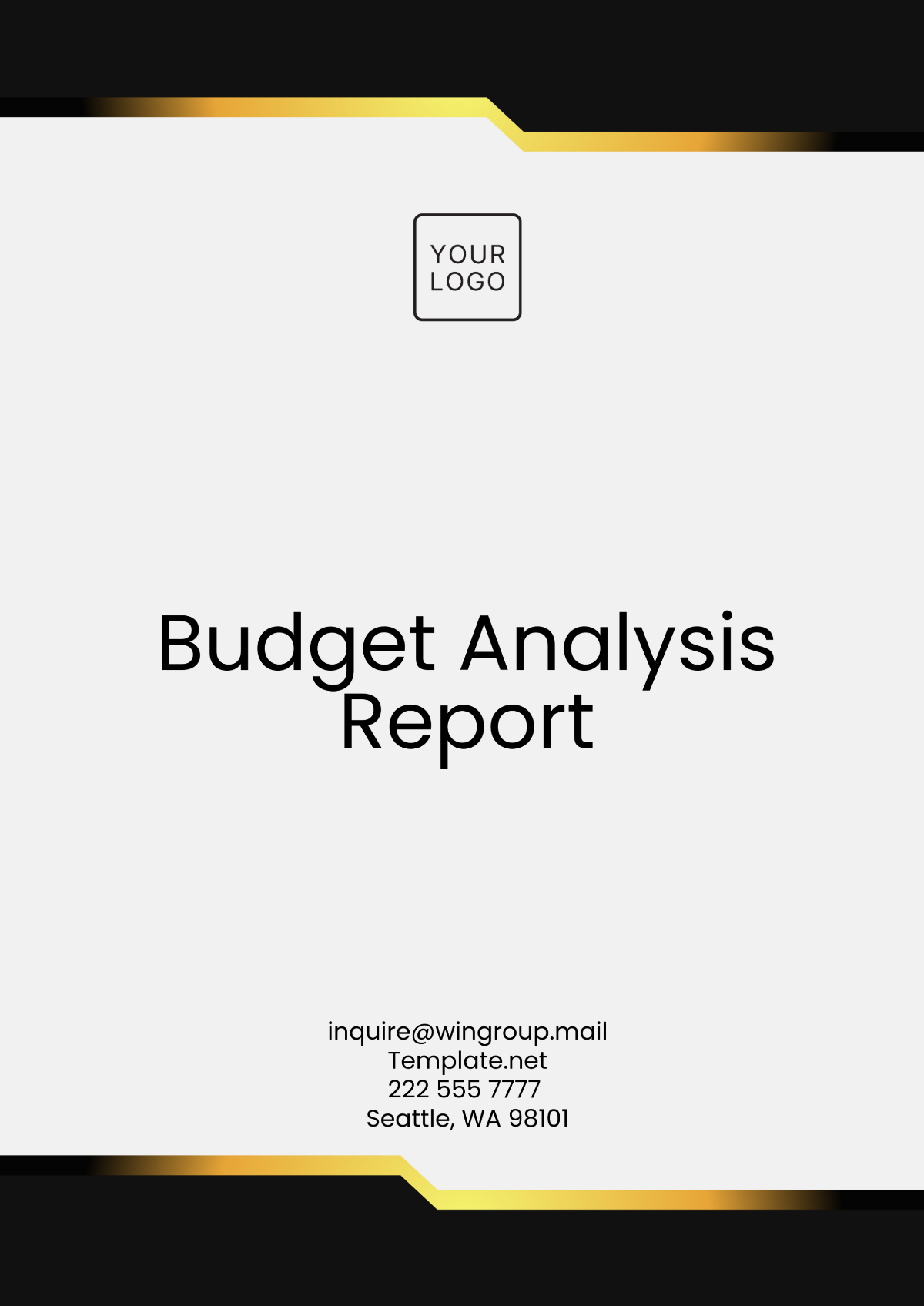Cafe Performance Analysis
I. Introduction
The purpose of this analysis is to evaluate the performance of [Your Company Name], focusing on various aspects such as financial performance, customer satisfaction, employee productivity, and operational efficiency. This comprehensive analysis aims to identify strengths, weaknesses, opportunities, and threats to help the cafe improve and thrive in a competitive market.
A. Objectives of the Analysis
Identify Key Performance Indicators: Determine the critical metrics that influence the cafe's success and monitor them closely. These KPIs will help track progress and identify areas that require attention.
Evaluate Financial Health: Assess the cafe's profitability, cost management, and revenue generation. Understanding the financial health will aid in making informed business decisions.
Assess Customer Satisfaction: Gather and analyze customer feedback to understand their level of satisfaction and areas for improvement. This will help in tailoring services to meet customer expectations.
Analyze Employee Productivity: Review employee performance and identify areas where productivity can be enhanced. Employee productivity is crucial for the efficient operation of the cafe.
Operational Efficiency: Evaluate the efficiency of cafe operations and identify bottlenecks or areas for improvement. Streamlined operations will lead to better service delivery and customer satisfaction.
B. Scope
Performance Metrics: The analysis covers a wide range of performance metrics including financial data, customer feedback, employee performance, and operational efficiency. This comprehensive approach ensures a holistic understanding of the cafe's performance.
Time Frame: The analysis considers data from the past fiscal year to provide a current and relevant assessment. Historical data trends are also reviewed to identify long-term patterns.
Comparative Analysis: Performance is compared against industry benchmarks to gauge how [Your Company Name] stands relative to competitors. This helps identify competitive advantages and areas needing improvement.
Stakeholder Involvement: Feedback from stakeholders such as employees, customers, and suppliers is incorporated to provide a well-rounded analysis. This ensures that multiple perspectives are considered.
C. Methodology
Data Collection: Data is collected from various sources including financial records, customer surveys, and employee performance reports. This ensures a robust and comprehensive dataset for analysis.
Quantitative Analysis: Quantitative methods are used to analyze financial performance, customer satisfaction scores, and other measurable metrics. This provides objective insights into the cafe's performance.
Qualitative Analysis: Qualitative feedback from customers and employees is analyzed to gain insights into non-quantifiable aspects such as service quality and work environment. This complements the quantitative analysis.
Benchmarking: The cafe's performance is benchmarked against industry standards and best practices. This helps in identifying gaps and setting realistic improvement targets.
II. Financial Performance
The financial performance of [Your Company Name] is crucial to its long-term sustainability. The following table presents key financial metrics for the past fiscal year:
Metric | Amount | Growth |
|---|---|---|
Total Revenue | $500,000 | 10% |
Net Profit | $50,000 | 5% |
Operating Expenses | $400,000 | 8% |
Cost of Goods Sold | $150,000 | 12% |
A. Total Revenue
Annual Revenue: The total revenue for the past year was $500,000, reflecting a 10% growth from the previous year. This growth indicates a positive trend in sales and customer acquisition.
Revenue Sources: The primary sources of revenue include coffee sales, food items, and specialty drinks. Diversifying revenue streams can help mitigate risks associated with dependency on a single product line.
Seasonal Trends: Revenue peaks during certain seasons, such as holidays and weekends, indicating high customer demand. Understanding these trends can help in planning inventory and staffing.
Growth Opportunities: The cafe can explore new revenue streams, such as catering services or retailing coffee beans, to boost revenue further. This can create additional touchpoints with customers and expand the market reach.
B. Net Profit
Profit Margin: The net profit for the past year was $50,000, with a growth rate of 5%. Maintaining a steady profit margin is crucial for the cafe's financial health.
Cost Management: Effective cost management strategies have helped maintain profitability despite rising operational costs. Regularly reviewing and optimizing expenses can sustain profit margins.
Expense Analysis: Analyzing expenses can identify areas where cost reductions can be made without compromising quality. This includes evaluating supplier contracts and operational efficiencies.
Profit Improvement: Strategies such as menu optimization and pricing adjustments can help increase the profit margin. Offering high-margin items and reducing low-margin ones can improve overall profitability.
C. Operating Expenses
Expense Breakdown: Operating expenses totaled $400,000, with an 8% increase from the previous year. Keeping track of these expenses is vital for maintaining financial stability.
Cost Control: Implementing cost control measures, such as energy-saving practices and bulk purchasing, can reduce operating expenses. Effective cost control contributes directly to the bottom line.
Expense Categories: Major expense categories include salaries, utilities, and rent. Understanding these categories helps in identifying significant cost drivers.
Efficiency Measures: Streamlining operations and reducing waste can further lower operating expenses. Efficient use of resources leads to better financial performance.
D. Cost of Goods Sold
COGS Analysis: The cost of goods sold (COGS) was $150,000, representing a 12% increase from the previous year. Monitoring COGS is essential for understanding the direct costs associated with revenue generation.
Supplier Management: Building strong relationships with suppliers can help negotiate better prices and reduce COGS. Effective supplier management is a key factor in cost control.
Inventory Control: Implementing effective inventory management practices can minimize waste and lower COGS. Proper inventory control ensures that resources are used efficiently.
Menu Engineering: Analyzing the profitability of menu items can help optimize the menu and reduce COGS. Focusing on high-margin items can improve overall profitability.
The financial performance analysis highlights areas where [Your Company Name] is performing well and areas where improvements can be made. Maintaining a balanced focus on revenue growth, cost management, and efficiency will ensure the cafe's long-term success. By implementing the identified strategies, [Your Company Name] can improve its financial health and sustain growth.
III. Customer Satisfaction
Customer satisfaction is vital for the success of [Your Company Name]. The following chart and table summarize customer satisfaction metrics based on recent surveys and feedback:
Metric | Score | Trend |
|---|---|---|
Overall Satisfaction | 85% | Increasing |
Service Quality | 90% | Stable |
Product Quality | 88% | Increasing |
Ambiance | 82% | Stable |
A. Overall Satisfaction
High Satisfaction: The overall customer satisfaction score is 85%, indicating a generally positive customer experience. This high satisfaction level is a testament to the cafe's ability to meet customer expectations.
Positive Feedback: Customers appreciate the quality of service and products offered by the cafe. Positive feedback can enhance the cafe's reputation and attract new customers.
Areas for Improvement: Some customers suggested improvements in the speed of service during peak hours. Addressing these concerns can further enhance satisfaction.
Customer Loyalty: High satisfaction levels contribute to customer loyalty and repeat business. Loyal customers are more likely to recommend the cafe to others.
B. Service Quality
Quality Service: The service quality score is 90%, reflecting consistent and reliable customer service. High service quality is a critical factor in customer retention.
Training Programs: Regular staff training programs ensure that employees maintain high service standards. Well-trained staff can provide a superior customer experience.
Customer Interaction: Positive customer interactions contribute significantly to the high service quality score. Friendly and attentive service is appreciated by customers.
Service Enhancements: Implementing a customer feedback system can help identify specific areas for service improvements. Continuous improvement is key to maintaining high service quality.
C. Product Quality
Superior Products: The product quality score is 88%, indicating that customers are satisfied with the cafe's offerings. High-quality products are essential for customer satisfaction.
Fresh Ingredients: The use of fresh and high-quality ingredients is a key factor in maintaining product quality. Ensuring consistent quality can build customer trust.
Menu Variety: A diverse menu with a range of options caters to different customer preferences. Offering new and seasonal items can keep the menu interesting.
Quality Control: Regular quality control checks ensure that all products meet the cafe's high standards. Consistency in quality is crucial for repeat business.
D. Ambiance
Pleasant Environment: The ambiance score is 82%, showing that customers generally enjoy the cafe's atmosphere. A pleasant environment enhances the overall dining experience.
Comfortable Setting: Comfortable seating and decor contribute to a positive dining experience. Creating a welcoming atmosphere can attract more customers.
Atmosphere Enhancements: Some customers suggested improvements in lighting and background music. Small changes can significantly enhance the ambiance.
Customer Experience: A pleasant ambiance enhances the overall customer experience and encourages repeat visits. Investing in the cafe's environment can pay off in customer loyalty.
The customer satisfaction analysis reveals that [Your Company Name] is performing well in several areas, particularly in service and product quality. However, there are opportunities to enhance the customer experience further, particularly in terms of service speed and ambiance. By addressing these areas, the cafe can ensure continued customer satisfaction and loyalty.
IV. Employee Productivity
Employee productivity is a critical factor in the success of [Your Company Name]. The following table presents key metrics related to employee performance:
Metric | Score | Trend |
|---|---|---|
Employee Efficiency | 80% | Stable |
Staff Turnover Rate | 15% | Decreasing |
Training Effectiveness | 85% | Increasing |
Job Satisfaction | 75% | Stable |
A. Employee Efficiency
High Efficiency: Employee efficiency is rated at 80%, indicating that staff are generally productive and effective in their roles. High efficiency contributes to the overall operational success of the cafe.
Task Management: Efficient task management practices ensure that employees can complete their duties promptly. Clear task allocation and prioritization are essential for maintaining productivity.
Efficiency Tools: Using tools and technology to streamline tasks can further enhance employee efficiency. Automation of repetitive tasks allows staff to focus on more value-added activities.
Continuous Improvement: Regular performance reviews and feedback help employees improve their efficiency. Providing training and resources to address areas of improvement is crucial.
B. Staff Turnover Rate
Low Turnover: The staff turnover rate is 15%, which is relatively low for the industry. Low turnover indicates that employees are satisfied with their work environment and conditions.
Retention Strategies: Implementing effective retention strategies, such as competitive salaries and benefits, can help maintain a low turnover rate. A stable workforce contributes to consistent service quality.
Employee Engagement: Engaging employees in decision-making processes can enhance their commitment to the cafe. Feeling valued and heard can reduce turnover rates.
Career Development: Providing career development opportunities helps retain talented staff. Employees are more likely to stay if they see a clear path for growth within the company.
C. Training Effectiveness
Effective Training: The training effectiveness score is 85%, indicating that the training programs are successful in equipping employees with the necessary skills. Effective training is crucial for maintaining high service standards.
Ongoing Training: Regularly updating training programs ensures that employees are up-to-date with the latest best practices. Continuous learning opportunities can enhance employee performance.
Feedback Mechanism: Incorporating employee feedback into training programs can improve their relevance and effectiveness. Understanding the training needs of employees is essential for tailored programs.
Training Resources: Providing comprehensive training resources, such as manuals and online courses, supports employee learning. Accessible resources help employees learn at their own pace.
D. Job Satisfaction
Job Satisfaction: The job satisfaction score is 75%, indicating that employees are generally satisfied with their roles. Job satisfaction is critical for employee retention and productivity.
Work Environment: Creating a positive work environment enhances job satisfaction. Factors such as supportive management and a collaborative culture contribute to a positive atmosphere.
Recognition Programs: Implementing employee recognition programs can boost morale and job satisfaction. Recognizing and rewarding employee contributions encourages high performance.
Work-Life Balance: Promoting work-life balance helps employees manage their responsibilities effectively. Flexible working arrangements and adequate time off can improve job satisfaction.
The analysis of employee productivity highlights that [Your Company Name] has a productive and satisfied workforce. However, there are opportunities to enhance job satisfaction and training effectiveness further. By addressing these areas, the cafe can improve employee performance and retention.
V. Operational Efficiency
Operational efficiency is essential for the smooth functioning of [Your Company Name]. The following chart and table present key metrics related to operational performance:
Metric | Score | Trend |
|---|---|---|
Order Fulfillment Time | 85% | Increasing |
Inventory Management | 90% | Stable |
Waste Reduction | 75% | Decreasing |
Equipment Utilization | 80% | Increasing |
A. Order Fulfillment Time
Fast Fulfillment: The order fulfillment time is rated at 85%, indicating efficient service delivery. Fast fulfillment times are crucial for customer satisfaction, particularly during peak hours.
Process Optimization: Streamlining processes, such as order taking and preparation, can further reduce fulfillment times. Efficient processes ensure that orders are completed quickly and accurately.
Technology Integration: Using technology, such as point-of-sale systems and kitchen display screens, can enhance order fulfillment efficiency. Technology helps in managing orders and reducing wait times.
Staff Training: Training staff on efficient order handling and time management can improve fulfillment times. Well-trained staff can manage high volumes of orders effectively.
B. Inventory Management
Effective Management: Inventory management is rated at 90%, indicating strong control over stock levels. Effective inventory management reduces waste and ensures that necessary items are always available.
Automated Systems: Implementing automated inventory systems can enhance accuracy and efficiency. These systems help track stock levels in real-time and alert when reordering is necessary.
Supplier Relationships: Building strong relationships with suppliers ensures timely delivery of quality products. Reliable suppliers contribute to effective inventory management.
Inventory Audits: Regular inventory audits help identify discrepancies and prevent stockouts or overstocking. Conducting audits ensures that inventory levels are accurate and up-to-date.
C. Waste Reduction
Reducing Waste: The waste reduction score is 75%, indicating efforts to minimize waste. Reducing waste is essential for cost control and environmental sustainability.
Recycling Programs: Implementing recycling programs can help reduce waste and promote sustainability. Recycling initiatives contribute to a positive brand image.
Waste Management Practices: Adopting best practices in waste management, such as composting and proper disposal, can further reduce waste. Effective waste management contributes to operational efficiency.
Employee Training: Training employees on waste reduction techniques ensures that everyone contributes to minimizing waste. Educated staff are more likely to adopt sustainable practices.
D. Equipment Utilization
Optimal Utilization: Equipment utilization is rated at 80%, indicating efficient use of available resources. Optimal equipment utilization ensures that operations run smoothly and efficiently.
Maintenance Programs: Regular maintenance programs prevent equipment breakdowns and extend the lifespan of assets. Well-maintained equipment operates more efficiently and reduces downtime.
Upgrading Equipment: Investing in modern, energy-efficient equipment can enhance operational efficiency. Up-to-date equipment helps in improving service quality and reducing operational costs.
Training on Equipment Use: Providing training on proper equipment use ensures that staff can operate machines safely and efficiently. Proper usage minimizes wear and tear and enhances productivity.
The analysis of operational efficiency highlights that [Your Company Name] is performing well in several areas, particularly in inventory management and order fulfillment. However, there are opportunities to further enhance waste reduction and equipment utilization. By addressing these areas, the cafe can improve its overall operational efficiency and service quality.
VI. Marketing Performance
Marketing performance is crucial for attracting and retaining customers at [Your Company Name]. The following table presents key marketing metrics:
Metric | Score | Trend |
|---|---|---|
Brand Awareness | 80% | Increasing |
Customer Acquisition | 70% | Stable |
Social Media Engagement | 85% | Increasing |
Return on Marketing | $1.5 per $1 | Stable |
A. Brand Awareness
High Awareness: The brand awareness score is 80%, indicating a strong presence in the market. High brand awareness is essential for attracting new customers and retaining existing ones.
Marketing Campaigns: Effective marketing campaigns contribute significantly to high brand awareness. Consistent and creative campaigns keep the brand top-of-mind for consumers.
Community Engagement: Engaging with the local community helps build a positive brand image. Participating in community events and initiatives strengthens the brand's connection with its audience.
Awareness Strategies: Implementing various strategies, such as promotions and events, can further enhance brand awareness. Diverse marketing tactics ensure that the brand reaches a broad audience.
B. Customer Acquisition
Acquisition Rate: The customer acquisition rate is 70%, reflecting stable growth in attracting new customers. Consistent customer acquisition is crucial for business growth.
Marketing Channels: Utilizing multiple marketing channels, such as social media and email, helps reach a broader audience. A multi-channel approach increases the chances of acquiring new customers.
Referral Programs: Implementing referral programs encourages existing customers to bring in new ones. Word-of-mouth referrals are highly effective in acquiring new customers.
Customer Onboarding: Providing a smooth onboarding process for new customers enhances their initial experience and retention. A positive first impression increases the likelihood of repeat business.
C. Social Media Engagement
High Engagement: The social media engagement score is 85%, indicating active and positive interactions with customers online. High engagement levels enhance the brand's online presence.
Content Strategy: A well-planned content strategy helps maintain high engagement levels. Regularly posting relevant and engaging content keeps the audience interested.
Customer Interaction: Responding promptly to customer inquiries and feedback on social media builds a strong online presence. Active interaction fosters a sense of community and loyalty.
Engagement Metrics: Monitoring engagement metrics helps refine social media strategies for better results. Analyzing metrics provides insights into what content resonates with the audience.
D. Return on Marketing
Positive ROI: The return on marketing investment is $1.5 for every $1 spent, showing a stable and positive return. Positive ROI indicates that marketing efforts are effective and cost-efficient.
Campaign Analysis: Analyzing the effectiveness of marketing campaigns helps optimize spending and improve ROI. Understanding what works allows for better allocation of marketing resources.
Cost-Effective Channels: Identifying cost-effective marketing channels ensures a better return on investment. Focusing on high-performing channels maximizes marketing efficiency.
Marketing Efficiency: Continuously improving marketing strategies and execution can enhance ROI. Efficient marketing practices ensure that resources are used effectively for maximum impact.
The marketing performance analysis reveals that [Your Company Name] is performing well in several areas, particularly in brand awareness and social media engagement. However, there are opportunities to further enhance customer acquisition and return on marketing investment. By addressing these areas, the cafe can improve its marketing effectiveness and attract more customers.
VII. Conclusion
The performance analysis of [Your Company Name] reveals several strengths and areas for improvement. The cafe demonstrates strong financial health, high customer satisfaction, and effective marketing strategies. However, there are opportunities to enhance employee productivity, operational efficiency, and marketing performance further.
By addressing the identified areas for improvement, [Your Company Name] can continue to grow and thrive in a competitive market. Implementing the suggested strategies will help the cafe enhance its overall performance, attract more customers, and maintain a loyal customer base. The commitment to continuous improvement and innovation will ensure the long-term success of [Your Company Name].



